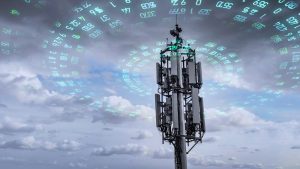Unleash the Power of 5G: Six Upcoming 5G Features You Need to Know

5G is changing how we live and work, offering faster speeds and improved connectivity. However, there is much more to this revolutionary technology than meets the eye. From its impact on industries to its role in shaping the future, 5G holds some surprising expectations worth exploring. This article will uncover the top six features of 5G you did not know.
Multi-Gigabit Connectivity
Gone are the days of slow internet on your mobile devices. With 5G, you can expect lightning-fast connectivity on smartphones, laptops, and other mobile devices. This advanced technology promises multi-gigabit speeds, revolutionizing the way you stay connected on the go. So say goodbye to buffering and hello to seamless streaming, lightning-fast downloads, and more.
Edge Computing
5G networks revolutionize data processing with Edge computing. Instead of sending data to centralized cloud servers for processing, edge computing allows data processing at the network’s edge, closer to the data source. This results in lower latency and improved response times, enabling new use cases such as real-time data analysis and autonomous devices.
Ultra-reliable Low Latency Communication
5G’s URLLC or (ultra-reliable low latency communication) feature allows for near-instantaneous communication, making it ideal for critical applications where delay can’t be tolerated. This 5G aspect opens up a world of possibilities, including remote surgeries where doctors can perform procedures from far away and autonomous vehicles that can make split-second decisions. URLLC will revolutionize industries and transform the way we live and work.
Massive MIMO
Massive MIMO technology is a key aspect of 5G networks, allowing many antennas to be used simultaneously. This simultaneous use greatly improves network performance and capacity, enabling 5G to provide higher speeds, lower latency, and better coverage than previous generations of mobile networks.
Implementing massive MIMO technology in 5G networks is a major step forward in developing next-generation mobile networks, making it possible to deliver faster, more reliable, and more secure connectivity to consumers and businesses.
5G mmWave
Millimeter Waves (mmWave) are high-frequency radio waves, typically in the range of 24-100 GHz, that transmit data in 5G networks. One of the key features of mmWaves is their ability to transmit large amounts of data at high speeds, making them ideal for 5G networks.
mmWaves can also penetrate obstacles such as walls and trees less effectively than lower-frequency waves, so they are often utilized in conjunction with other frequency bands to provide more comprehensive coverage.
Dynamic Networks
One of the primary benefits of 5G technology is its ability to dynamically allocate network resources based on real-time user and device demand. This dynamicity means that the network can adjust its resources in real-time to meet the changing needs of its users.
In traditional networks, resources are typically assigned statically, with a set amount of bandwidth and other resources allocated to each user or device. As a result, this method can lead to inefficiencies, as some users may need to use their allocated resources while others may be experiencing congestion.
With 5G, the network will be able to monitor the current usage of each user and device and allocate resources accordingly. This aspect will result in a more efficient and effective use of network resources and ensure that each user has the capacity and resources needed to meet their needs.




